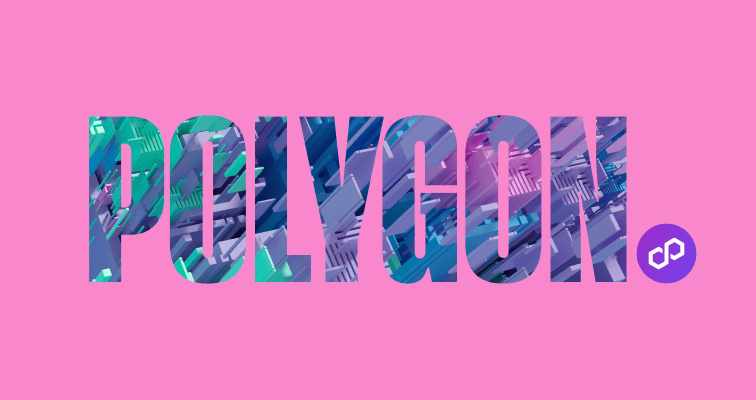Launched by Jaynti Kanani, Sandeep Nailwal, Anurag Arjun and Mihailo Bjelic in 2017, Polygon was developed as a way to solve the persistent scalability issues on the Ethereum blockchain. Learn more about what Polygon does, where and how to buy MATIC, and how to store your MATIC tokens.
Introduction to Polygon (MATIC)
Polygon, formerly known as Matic Network, is a platform designed to create interconnected blockchain networks. It was built on top of the Ethereum (ETH)
MATIC, Polygon’s native cryptocurrency, is used for network fees, protocol security and governance, with MATIC holders able to vote on decisions relating to the Polygon network. MATIC is an
Read our “What is Polygon (MATIC)?” article to learn more about the blockchain and its token.
“The fundamental protocol that allows anyone to create and exchange value, powered by zero-knowledge technology.”
Polygon

Where to buy Polygon (MATIC)
Polygon (MATIC) is widely available for purchase on both centralised and
Centralised exchanges (CEXs) and trading platforms, such as eToro, can be used to buy, sell or trade MATIC and other cryptocurrencies using
On the other hand, decentralised exchanges operate without a central point of authority, hence the name. These platforms are largely automated, relying on
Given Polygon’s built-in compatibility, many DEXs offer MATIC, especially those focused on the Ethereum network.
Tip: Centralised exchanges usually provide additional services, such as customer support, which is not often the case on DEXs.
How to keep and store Polygon
MATIC is an ERC-20 token that can be stored in any cryptocurrency wallet, as long as it supports Ethereum-based tokens.
Software wallets, which can be installed on a computer or smartphone, are popular for holding MATIC and other ERC-20 tokens. They offer a balance of convenience and security, allowing you to easily access your tokens while maintaining control of your private keys.
Hardware wallets are physical devices that store your MATIC tokens offline, adding an extra layer of security against online threats such as hacking or phishing. For those with more substantial holdings or security concerns, a hardware wallet provides a highly secure place to keep MATIC and other ERC-20 tokens.
Web wallets, accessed via an Internet browser, can also be used to safely store MATIC. As long as you have an Internet connection, you can log in to your wallet and manage your tokens.
For MATIC specifically, here are three potential options:
- Zengo: Zengo is a keyless crypto wallet from which users can safely hold, buy, sell and swap cryptocurrencies, including MATIC. Zengo offers enhanced security features, such as facial biometrics, and a unique, distributed approach to key management.
- Trust Wallet: Trust Wallet is a widely used mobile wallet that supports Ethereum and all ERC-20 tokens, including MATIC. It has built-in exchanges for users to trade their tokens directly within the wallet.
- Ledger Nano S/X: These small hardware wallets look like USB keys, but can connect through Bluetooth, making assets accessible from your phone or tablet. Each Nano can store up to 100 different cryptoassets, including MATIC.
Regardless of the type of wallet you choose, it is important to maintain good security habits. This includes keeping your private keys secret and making sure your wallet is compatible with ERC-20 tokens before transferring any tokens to it.

Learn more about Polygon
By creating a
In February 2021, the Matic Network rebranded to Polygon and significantly expanded the project’s scope. Instead of just providing a single layer-2 solution, it aimed to help Ethereum become a fully fledged multi-chain system.
Polygon was designed to provide developers with the ability to easily deploy a standalone chain, or a secured layer 2 chain, that benefitted from Ethereum’s security, popularity and wider ecosystem.
To learn more about Polygon before buying MATIC, and to help make an informed investment decision, take a look at some of these resources:
| eToro Academy | Online | An educational platform that incorporates articles, guides and market analysis. The eToro Academy provides comprehensive insight into Polygon (MATIC), as well as other cryptocurrencies, and investment strategies. |
| Polygon.technology | Website | The Polygon website is a useful resource for learning about Polygon’s mission, team, technology and partnerships. It also offers regular updates and news regarding the project’s developments. |
| Polygon Pod | Podcast | A podcast series produced by Polygon Labs which delves into pressing topics in the |
How to buy Polygon (MATIC) on eToro
eToro is one of the world’s most popular social trading platforms, widely acknowledged for its intuitive interface and innovative features. For cryptocurrencies such as MATIC, eToro simplifies the buying and selling process, making it an accessible platform for novice and seasoned traders.
- Sign up
The first step is to create an eToro account. This involves providing personal details and agreeing to the platform’s Terms and Conditions. - Verify
In accordance with KYC regulations, users must provide identification for verification. This usually involves providing a copy of a valid ID and proof of address. - Deposit funds
To buy MATIC, you must first use fiat currency to deposit funds into your eToro account. Click “Deposit Funds” to initiate this process. - Buy MATIC
With funds in your account, you can search for MATIC on the eToro trading platform and proceed with the purchase. Click “Trade” and decide how many MATIC tokens you want to buy. Always double-check the transaction details before confirming your purchase.

Final thoughts on investing in Polygon
There are plenty of reasons why someone might want to buy Polygon (MATIC), but the investment carries its own set of risks. Cryptocurrencies have been proven to be highly
Consider your personal investment goals and risk tolerance, and only invest what you can afford to lose.
Learn more about Polygon (MATIC) and other cryptoassets on the eToro Academy.
FAQ
- Should you buy Polygon (MATIC)?
-
Polygon has emerged as a promising solution for Ethereum’s scalability and
gas fee issues. Alongside its past history, Polygon is also following an extensive roadmap that many investors are keeping a close eye on.However, cryptocurrency markets are highly volatile and prices can fluctuate significantly. Although Polygon’s underlying vision and technology are strong, there is no guarantee that this will be reflected in the short- or long-term price of MATIC.
- What makes Polygon (MATIC) different from other cryptocurrencies?
-
Polygon is essentially a layer 2 scaling solution that allows developers to launch decentralised applications on the platform using its
Proof of Stake (PoS) blockchain.Unlike other cryptocurrencies that run on single, separate blockchains, Polygon provides a framework that allows developers to create and connect blockchain networks together.
- Is there a hard cap on MATIC tokens?
-
Yes, there is a hard cap of 10 billion MATIC tokens. This fixed supply model is common among many cryptocurrencies and is designed to create scarcity and potentially drive up demand over time.
This information is for educational purposes only and should not be taken as investment advice, personal recommendation, or an offer of, or solicitation to, buy or sell any financial instruments.
This material has been prepared without regard to any particular investment objectives or financial situation and has not been prepared in accordance with the legal and regulatory requirements to promote independent research. Not all of the financial instruments and services referred to are offered by eToro and any references to past performance of a financial instrument, index, or a packaged investment product are not, and should not be taken as, a reliable indicator of future results.
eToro makes no representation and assumes no liability as to the accuracy or completeness of the content of this guide. Make sure you understand the risks involved in trading before committing any capital. Never risk more than you are prepared to lose.


